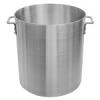I am doing freelance work ( consulting) and the place I am at has 4 large bucket elevator, scales etc. Equipment is aged. Equipment is now full of holes either from them making new holes and where some nuts and bolts used to be and they figured they don't need them. Is there any suggestions on how I can close these holes ? ? It's mainly stainless steel and plexi . Maybe rivets? Maybe replace the nuts and bolts ( in some areas the reason they bore new holes was loss of threading in one area) Please assist?.
- Home
- Sponsors
- Forums
- Members ˅
- Resources ˅
- Files
- FAQ ˅
- Jobs
-
Webinars ˅
- Upcoming Food Safety Fridays
- Recorded Food Safety Fridays
- Upcoming Hot Topics from Sponsors
- Recorded Hot Topics from Sponsors
- Food Safety Live 2013
- Food Safety Live 2014
- Food Safety Live 2015
- Food Safety Live 2016
- Food Safety Live 2017
- Food Safety Live 2018
- Food Safety Live 2019
- Food Safety Live 2020
- Food Safety Live 2021
- Training ˅
- Links
- Store ˅
- More















